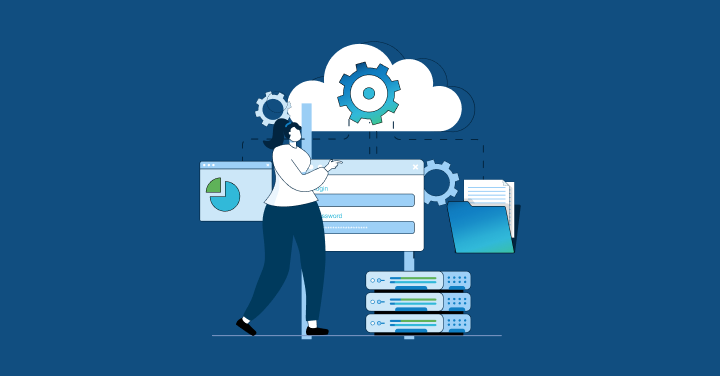In today’s fast-paced digital era, IT operations are under immense pressure to ensure continuous availability, enhanced performance, and rapid resolution of issues. Traditional IT operations often fall short in handling the complexity, volume, and velocity of modern IT environments. This is where AIOps (Artificial Intelligence for IT Operations) comes in, offering a transformative approach that leverages artificial intelligence and machine learning to automate and optimize IT operations.
But how exactly does AIOps platform development reshape IT operations? Let’s explore in depth.
Understanding AIOps
AIOps refers to the application of AI, machine learning (ML), and data analytics to automate and enhance IT operations. The term was coined by Gartner, emphasizing the role of big data, AI, and automation in delivering proactive insights and faster root cause analysis (RCA).
An AIOps platform typically ingests data from various sources—logs, metrics, events, traces, and more—and applies advanced algorithms to derive insights, detect anomalies, predict outages, and even automate remediation steps.
Key Pillars of AIOps Platform Development
Before delving into the transformation AIOps brings to IT, it’s important to understand the core capabilities involved in developing an AIOps platform:
-
Data Ingestion and Aggregation
Collects data from diverse sources such as servers, network devices, applications, cloud environments, and monitoring tools. -
Real-Time Processing
Enables real-time stream processing of metrics, events, logs, and telemetry data. -
Correlation and Contextualization
Correlates related events and adds contextual data to reduce noise and prioritize alerts. -
Anomaly Detection
Uses ML models to identify behavior that deviates from the norm. -
Predictive Analytics
Anticipates potential failures, performance degradation, or capacity shortages before they occur. -
Automated Remediation
Triggers workflows or scripts to resolve issues autonomously or with minimal human intervention. -
Visualization and Insights
Provides dashboards and reports for observability and decision-making.
The Traditional IT Operations Landscape
IT operations teams typically rely on:
-
Monitoring tools for system health
-
Manual ticketing systems for incidents
-
Siloed teams managing different stacks
-
Reactive troubleshooting based on alerts
This reactive model leads to several challenges:
-
Alert fatigue due to noise and redundant alarms
-
Slow incident resolution caused by manual processes
-
Poor collaboration between teams
-
Inability to scale with growing infrastructure complexity
As organizations adopt hybrid cloud, microservices, and containerization, these challenges amplify, making traditional methods unsustainable.
How AIOps Transforms IT Operations
1. Proactive Incident Management
AIOps platforms shift the focus from reactive to proactive management. By analyzing historical data and identifying patterns, AIOps can predict potential failures or performance issues.
For example, if a database query pattern historically leads to increased CPU usage and eventual crashes, AIOps will detect the early signals and raise a proactive alert or automatically trigger remediation.
Impact:
-
Reduced mean time to detection (MTTD)
-
Fewer outages and service disruptions
-
Enhanced service availability
2. Noise Reduction and Intelligent Alerting
Traditional monitoring systems often generate thousands of alerts, most of which are false positives or redundant. AIOps platforms use correlation and clustering to reduce alert noise.
By grouping related alerts into a single incident and applying contextual intelligence, AIOps ensures that only meaningful alerts reach IT teams.
Impact:
-
Up to 90% reduction in alert noise
-
Focused attention on critical incidents
-
Reduced alert fatigue and burnout
3. Automated Root Cause Analysis (RCA)
Troubleshooting in traditional IT setups can take hours or even days, involving multiple teams and tools. AIOps automates RCA by:
-
Correlating events across systems
-
Mapping dependencies (e.g., service maps)
-
Using ML to pinpoint probable causes
This automation drastically cuts down resolution times.
Impact:
-
Faster Mean Time to Repair (MTTR)
-
Improved user experience
-
Efficient use of IT personnel
4. Predictive Maintenance and Capacity Planning
Instead of reacting to failures, AIOps platforms use predictive analytics to foresee issues like resource exhaustion, degraded services, or traffic spikes.
This is particularly useful for capacity planning. AIOps can recommend infrastructure scaling based on usage trends and historical data.
Impact:
-
Cost savings from optimized resource utilization
-
Reduced downtime due to predictive alerts
-
Better planning and budgeting
5. Cross-Domain Insights and Visibility
AIOps breaks down silos by aggregating and analyzing data across networks, applications, infrastructure, and security. This holistic view is critical in modern, distributed IT environments.
With unified dashboards and analytics, IT teams gain real-time visibility into the entire ecosystem.
Impact:
-
Cross-functional collaboration
-
Streamlined IT governance
-
Enhanced decision-making
6. Self-Healing Systems
One of the most promising aspects of AIOps is automated remediation or self-healing capabilities. Based on predefined rules or AI-driven recommendations, AIOps can execute scripts to:
-
Restart failed services
-
Roll back faulty deployments
-
Reroute traffic during outages
Impact:
-
Zero-touch operations for known issues
-
Reduced downtime
-
Improved SLA compliance
7. Enhanced Security Posture
Security and operations often overlap, especially in DevSecOps. AIOps platforms can assist in detecting anomalies that indicate security breaches, such as:
-
Unusual access patterns
-
Sudden spikes in traffic
-
Configuration drifts
By integrating with security tools (SIEM/SOAR), AIOps can also trigger automated incident responses.
Impact:
-
Faster threat detection
-
Reduced attack surfaces
-
Unified SecOps and ITOps strategies
Real-World Use Cases
Financial Services:
Banks use AIOps to monitor transactions, detect fraud, and ensure uptime for critical systems like payment gateways.
E-commerce:
Retailers handle massive traffic spikes during events like Black Friday. AIOps ensures system scalability and customer experience continuity.
Healthcare:
Hospitals rely on uninterrupted access to digital health records. AIOps ensures high availability and rapid issue resolution for clinical systems.
Challenges in AIOps Adoption
While the benefits are clear, there are challenges in developing and adopting AIOps platforms:
-
Data Quality & Integration: Success depends on ingesting clean, relevant, and complete data from multiple sources.
-
Model Training: ML algorithms require time and historical data to become accurate.
-
Cultural Resistance: Ops teams may resist automation due to fear of job displacement.
-
Tool Sprawl: Integrating with existing tools without causing redundancy is complex.
Overcoming these challenges requires a strategic approach—starting with small pilots, focusing on high-impact areas, and gradually expanding.
Best Practices for AIOps Platform Development
-
Start with Clear Objectives: Identify specific pain points such as slow RCA, high alert volume, or poor visibility.
-
Ensure Data Readiness: Build robust data pipelines and normalize diverse data formats.
-
Choose Modular Architecture: Use a microservices-based architecture for scalability and integration flexibility.
-
Enable Human-in-the-Loop: Allow human oversight and override in early phases to build trust in AI-driven decisions.
-
Monitor and Evolve: Continuously monitor ML models and retrain them based on feedback and new data.
The Future of IT Operations with AIOps
The convergence of AI, automation, and cloud-native architectures is pushing IT operations toward a future where:
-
Systems self-monitor and self-correct
-
Issues are prevented rather than reacted to
-
Humans focus on innovation instead of firefighting
AIOps is not just a trend—it’s a fundamental shift that will define the next generation of intelligent IT operations.
Conclusion
AIOps platform development marks a paradigm shift in how organizations manage, monitor, and maintain their IT environments. By harnessing the power of AI and automation, businesses can transform reactive, siloed operations into intelligent, proactive ecosystems.
The journey to AIOps maturity isn’t without its hurdles, but with a strategic vision and the right execution, it holds the promise of reduced costs, improved reliability, and operational excellence.



